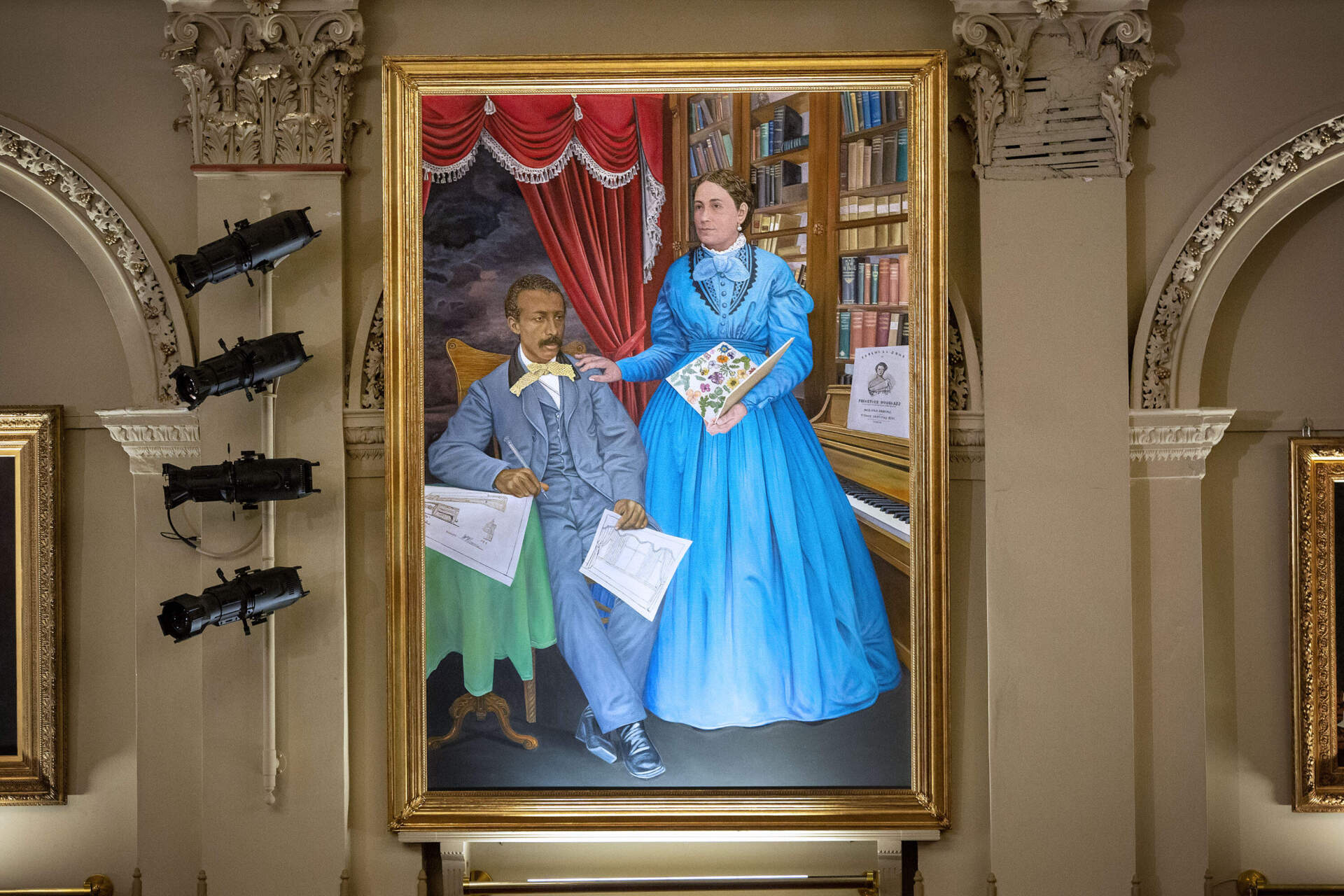Advertisement
Portraits of historic Black Americans now grace a Worcester landmark
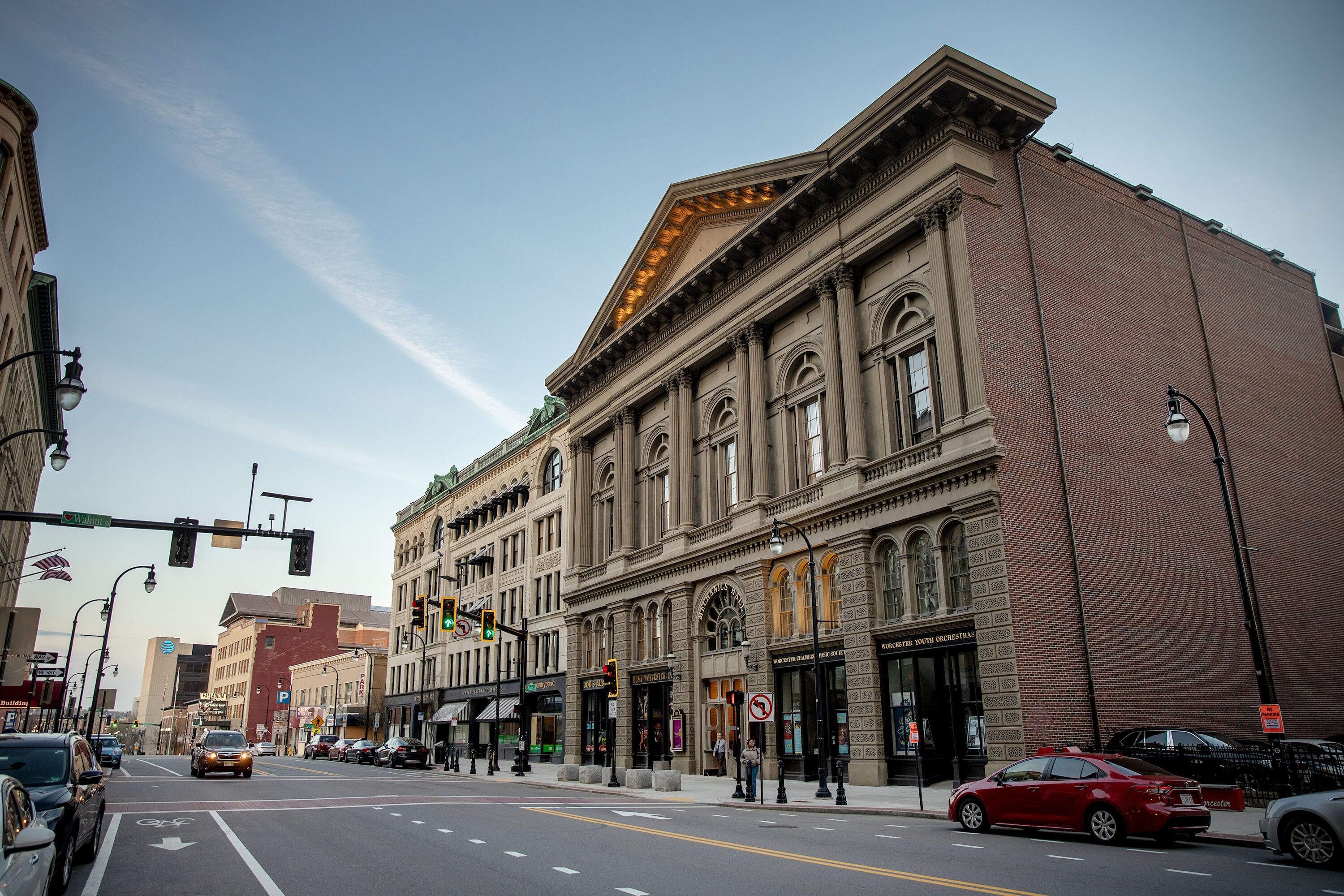
Mechanics Hall in Worcester has unveiled three newly commissioned portraits, the first in the concert hall’s 167-year history to feature Black Americans. Activists Frederick Douglass, Sojourner Truth, and couple William and Martha Brown now hang on the walls of the historic landmark’s Great Hall.
The effort to commission the new works began in 2019 after a discussion among Mechanics Hall leadership about adding a portrait of Frederick Douglass turned into a larger vision.
“As time evolved and we really got into the planning of the project, one Black man in a gallery of white men and women was not appropriate,” said Kathleen Gagne, executive director and co-chair of The Portraits Project at Mechanics Hall. “It was not going to do justice to the activity that was advocated by our association or the history of Worcester.”
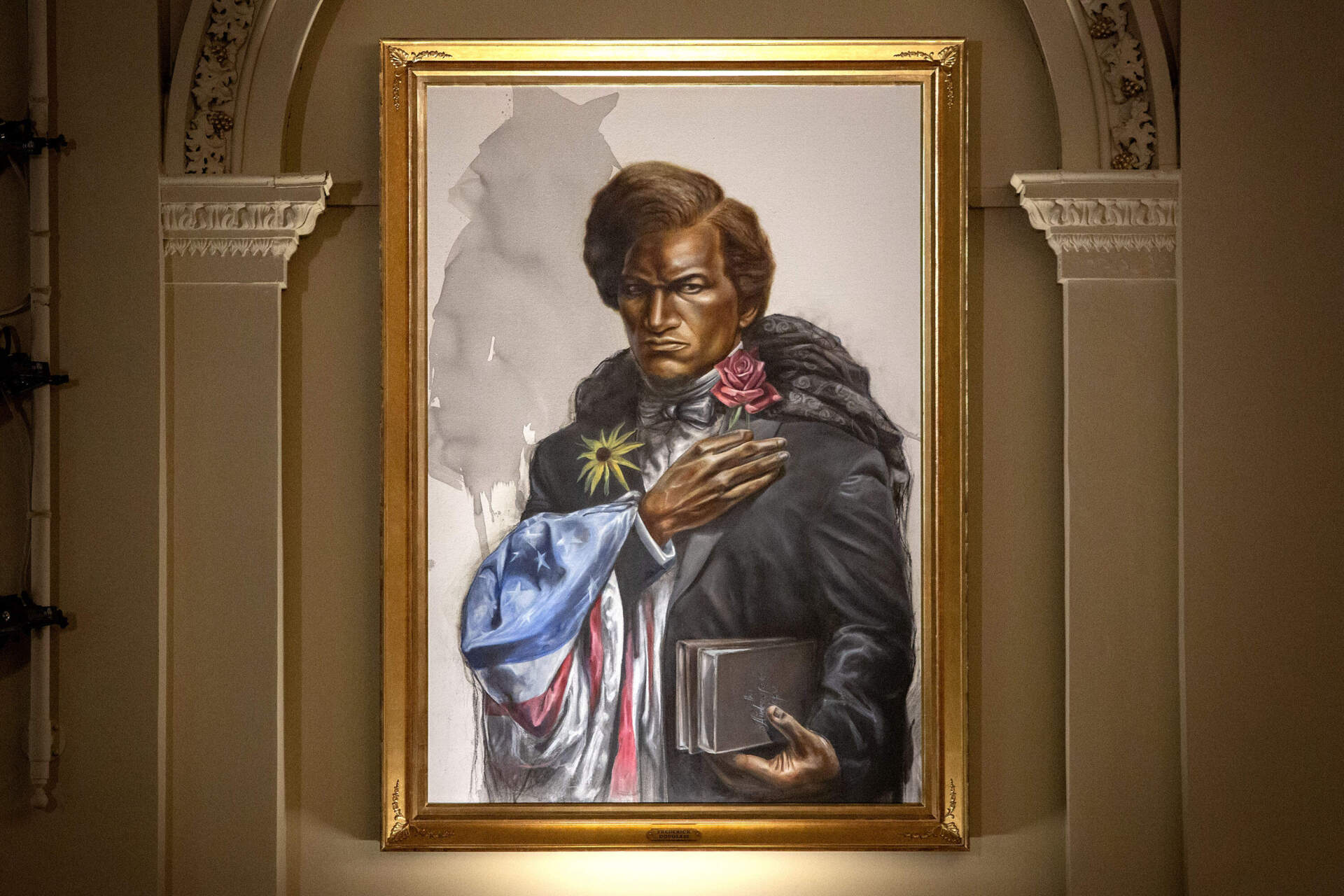
Douglass, as well as the three other portrait subjects, has ties to Mechanics Hall and the history of civil rights advocacy in Worcester more broadly. He was among the first speakers at the hall after its construction in the mid-1850s.
Led by co-chair Gloria D. Hall, The Portraits Project tapped Holyoke-based artist Imo Nse Imeh to portray Douglass. Against a white background with ink wash shadowing, Douglas stands draped with a tattered Civil War-era American flag and theatrically adorned with flowers.
“I don't know how often people think about Black figures in the 19th century, not only as free but actually as heroes,” Imeh said during the portrait's unveiling. “The hero story is what this brings to Mechanics Hall. And I hope it does so in a very grand and resonant way.”
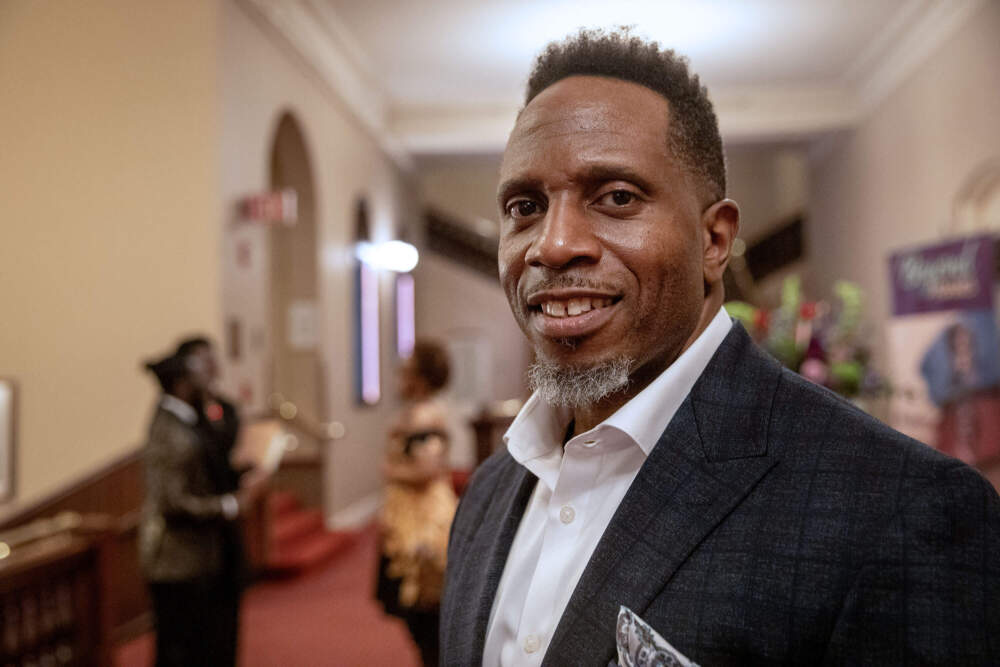
Mechanics Hall held a panel discussion with each of the three artists in Washburn Hall just before opening doors in the Great Hall for visitors to see the new works. The crowd applauded upon a reflection from Imeh on the symbolism in his painting and what it means for Douglass, a formerly enslaved man, to be seen holding an American flag.
“I don't think people understand what patriotism is,” he said during a panel discussion. “But people who are the descendants of chattel slavery, who continue to love this nation so much that they want it to be better, are patriots.”
Long Island-based painter Manu Saluja painted Sojourner Truth, who was born into slavery and became one of the country’s most prominent abolitionists. Truth spoke at the first National Women's Rights Convention in Worcester in 1850, the start of her speaking career, according to Mechanics Hall.
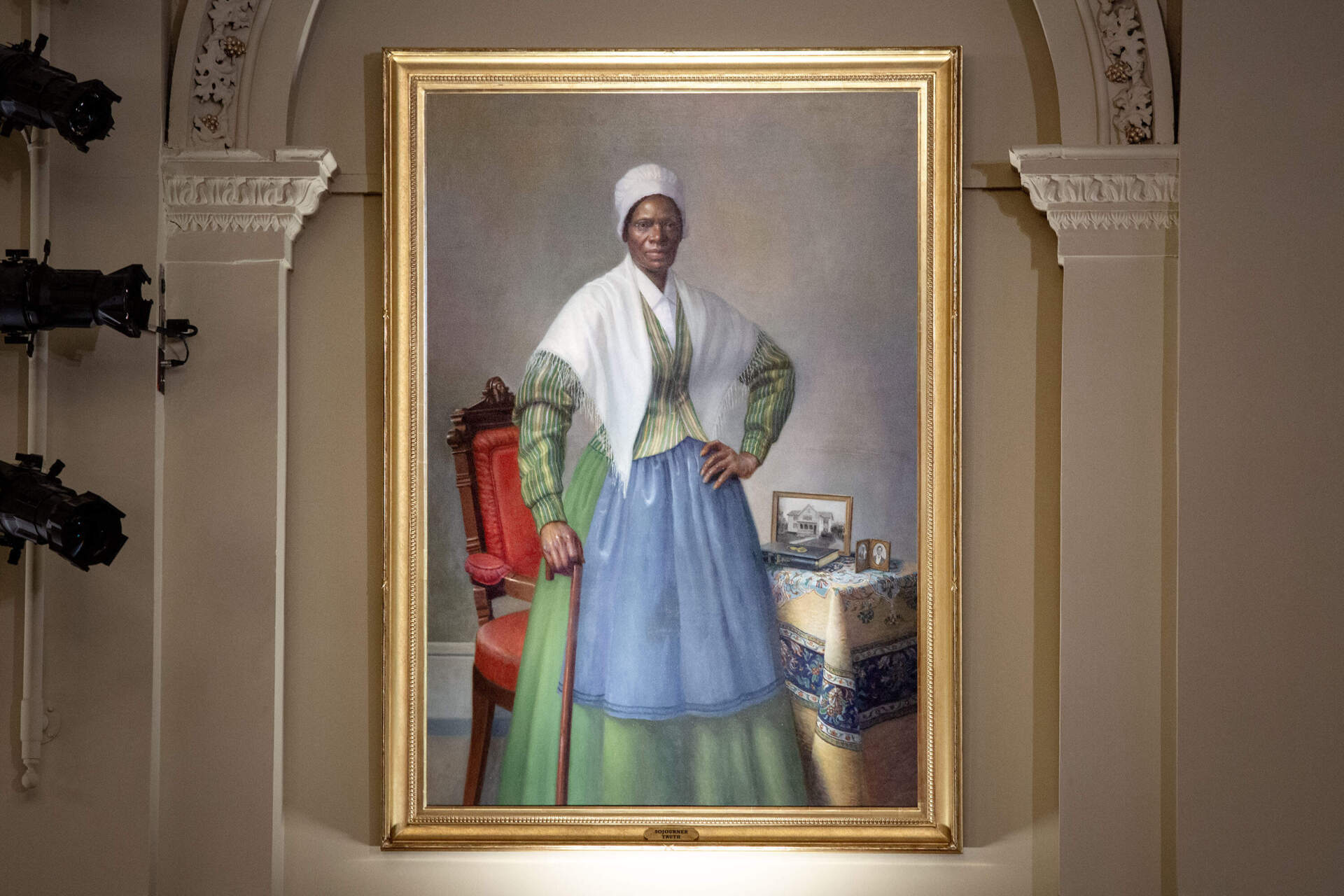
Saluja depicts Truth standing with a hand on her hip, a pose mostly reserved for men in the subject’s lifetime. The red fabric on the chair matches the upholstery in the concert hall’s seats below the portrait, and on the table next to her, a copy of her book “Narrative of Sojourner Truth.” The artist spoke about the significance of including that object, which served as a source of research for the portrait.
“From the sale of that book, she was then able to earn a living and buy her own home in Northampton, Massachusetts,” Saluja said.
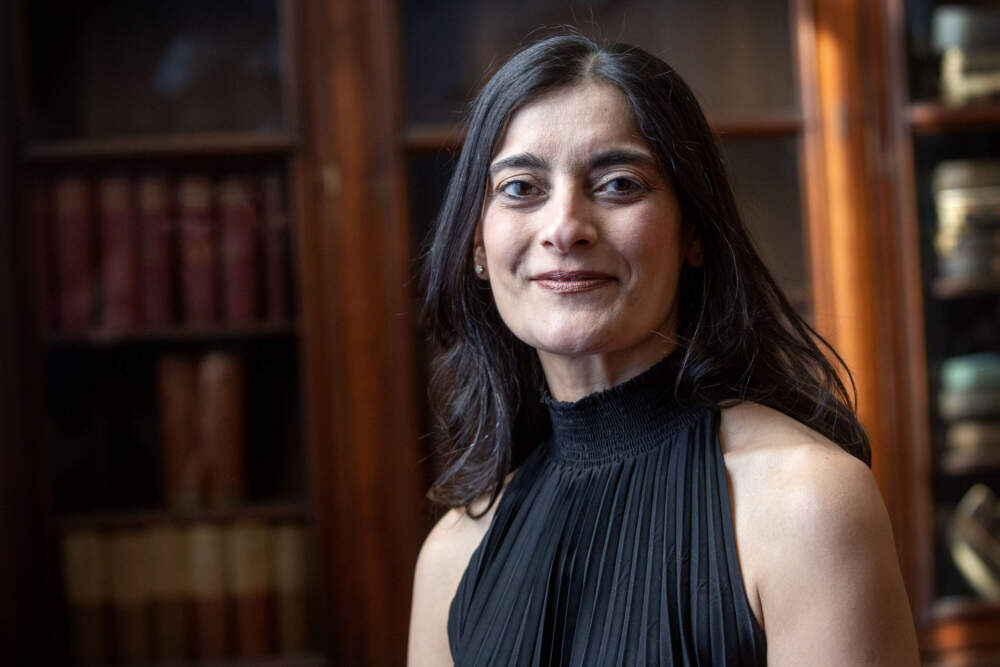
The book sits next to photos of Truth’s firstborn child as well as her grandson James Caldwell, who fought in the Civil War. Truth was the first Black woman in United States history to win a court case when she sued a white man and successfully freed her 5-year-old son.
“I felt it was important to include that as a symbol of her legacy,” Saluja continued
The third painting is the largest, in part because it had to include two subjects. With its frame, the portrait was too large to fit in the service elevator and had to be carried through the Main Street entrance and up the hall’s several flights of stairs.
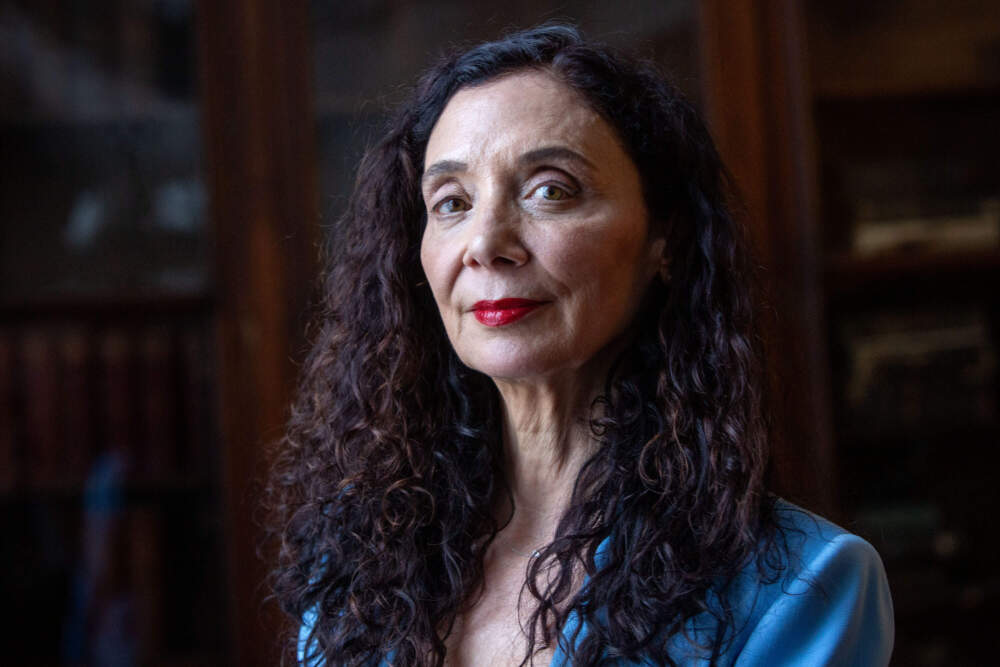
Brooklyn-based painter Brenda Zlamany visited the home of William and Martha Brown in Worcester in her research for the painting and met with their descendants, one of whom was present when the painting arrived in late January: James Goldsberry, great-great-grandson of the Browns.
“It was just a couple here in Worcester that ran a family business,” Goldsberry said. “But beyond that business, they were leaders and advocates for abolition and women's rights back in the day.”
The Brown family ran a successful upholstery and furniture supply business based in Worcester. In 1849, the Worcester County Mechanics Association recognized William Brown for his accomplishments in that year’s Mechanics Fair. He became the first Black member of the association in 1867.
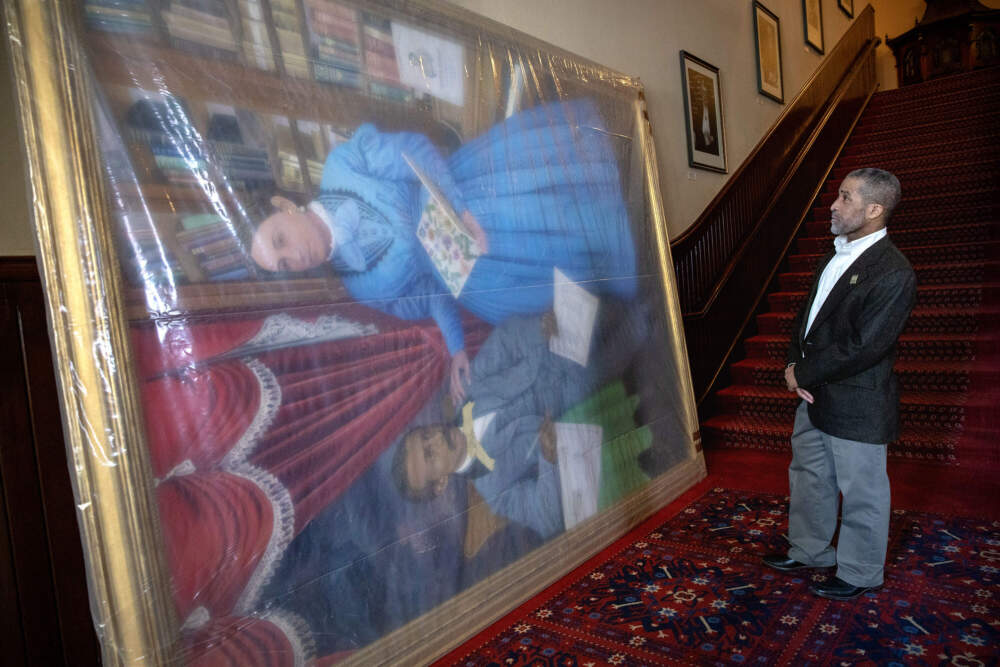
Mechanics Hall has plans for music events and educational programming for children and adults surrounding the new works. Gagne sees these portraits as a way for visitors to get a fuller picture of the venues’ history.
“There's so much to talk about,” she said. “The subjects themselves, the artists, the portrait art, the social reform movement, the mechanics association, all of those things are just wonderful stories that need to be told.”
